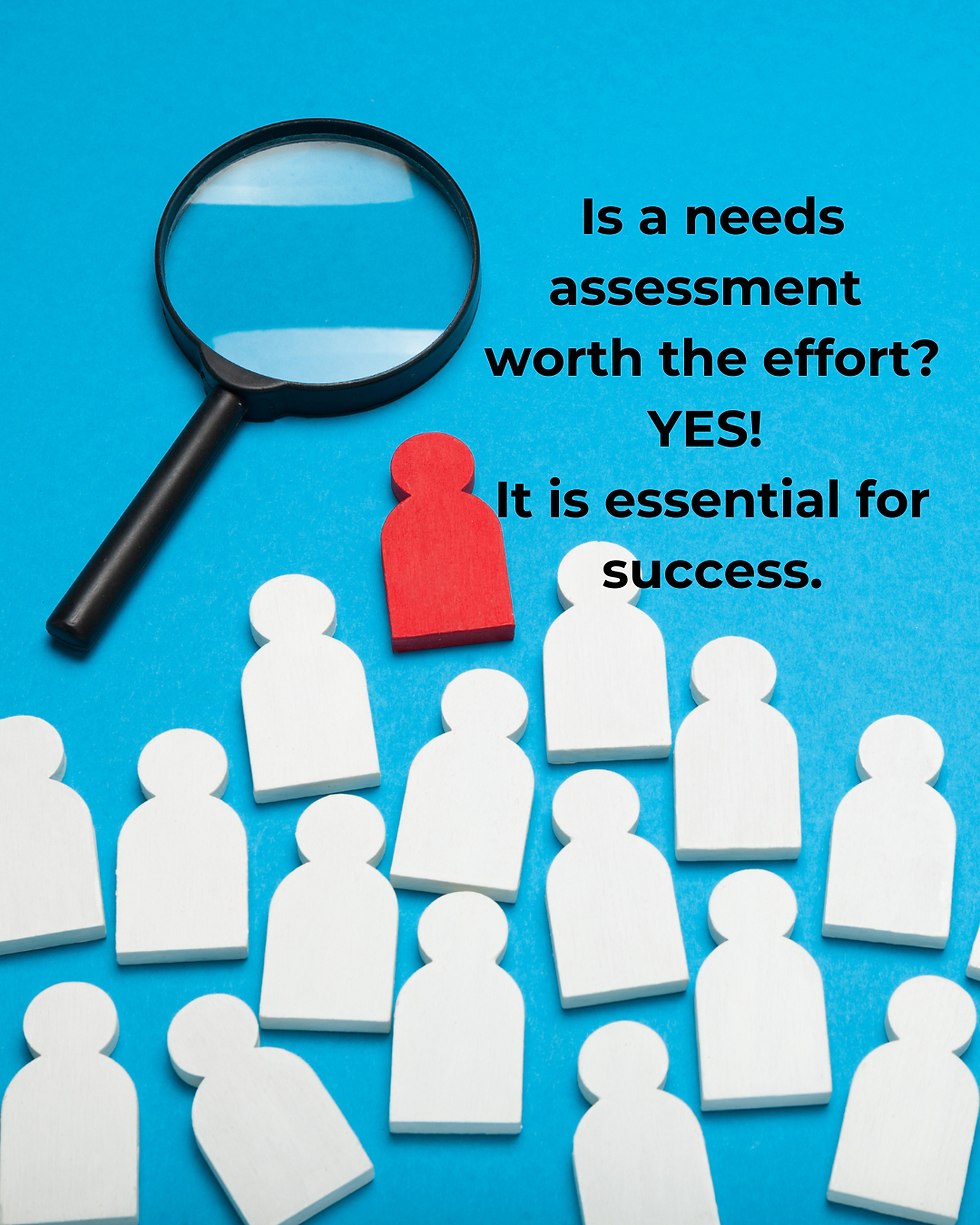Is a needs assessment worth the effort? Yes! It is essential to success.
- Barbara J. Mayfield, MS, RDN, LD, FAND

- Aug 8
- 3 min read

When creating communication, how essential is it to complete a needs assessment? After all, it requires time and effort, and in some cases, significant financial resources.
I have observed that communication is often created without the benefit of assessing the audience’s needs, wants, beliefs, values, behaviors, and more. Does it matter? What difference does it make?
A LOT! For communication to be successful, it must be audience-focused. For communication to be audience-focused, it requires a needs assessment.
What is a Needs Assessment?
In Chapter 11 of Communicating Nutrition: The Authoritative Guide, we define a needs assessment as follows:
A needs assessment is a data collection and analysis process that provides information about an audience and is used to direct all aspects of communication planning and implementation, including determining desired outcomes, message development, and delivery channels and approaches.
The chapter reminds readers that the process does not have to be complicated:
Needs assessments can range from casual, quick-and-dirty approaches to more formalized data collection for research purposes… The biggest mistake a communicator can make regarding needs assessments is not completing one.
What are the benefits of completing a needs assessment?
Chapter 11 describes four benefits of including a needs assessment as part of every communication you create.
A needs assessment…
Informs about the audience through data collection and analysis.
When creating communication, we may think we know the audience, but if we don’t verify our assumptions, our communication could easily fail. Knowing an audience requires a needs assessment, simple as that.
Not sure how to collect data about your audience? Check out this post.
Prevents missing the mark and wasting resources.
Audience-focused communication, which is tailored to the target audience’s needs, is designed to hit the mark. What is the mark? Your target audience. Read more in this post.
Communication that does not meet an audience’s needs will miss the mark, wasting valuable resources. Therefore, allocate a portion of your time and resources to learn about your audience. This investment upfront will pay off in successful communication.
To read an example of preventing communication from missing the mark, read the story in Chapter 11 or check out this post.
Involves the audience and demonstrates interest in their needs.
Ideally, involve and engage the audience when conducting a needs assessment. Don’t rely solely on already collected surveys or the testimony of others who work with the audience. Ask the audience directly.
Not only will you collect more reliable information, but more importantly, you will demonstrate you truly care about meeting their needs. Audiences respond well to being asked what they need and then being heard. The communication that is created will have greater audience support.
Creates a connection between the communicator and the audience.
Communication is most successful when the communicator and the audience connect in meaningful ways. A needs assessment can be the initiator for that connection.
Not only is the communicator made aware of audience needs, the audience also becomes more aware of them, building an openness to receiving communication designed to meet those needs. This makes the needs assessment the first step in gaining understanding and taking steps for change.
Learn more about needs assessments and knowing your audience:
Want to know the secret to creating better content? Know your audience.
“It all starts with being curious and humble; putting yourself in the shoes of your audience and going on the journey with them." ~ Samara Johansson
If you like this content, please share it.








Comments